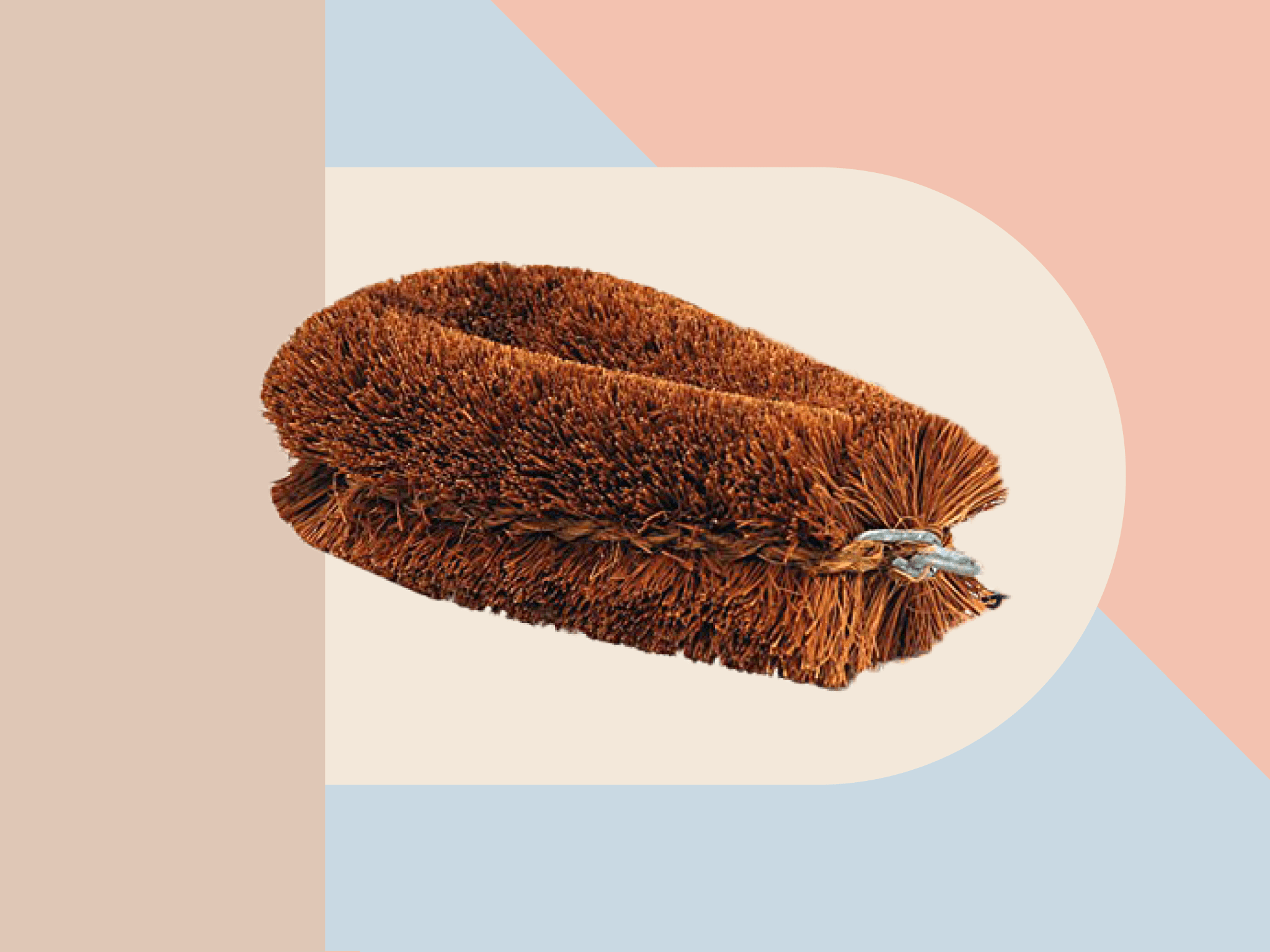We may earn revenue from the products available on this page and participate in affiliate programs.
Overcooked quinoa, stovetop popcorn, beans, and scrambled eggs: these things have left me with the greatest of messes, stuck adamantly to the bottoms of my pots and pans. But no more.
In the past, I’ve tried a number of varying scrubbing techniques to make my cookware shiny and clean. When it came to my beloved cast iron pan, I used a generous pour of salt and a damp paper towel to scoff away food remnants, and when faced with a truly burnt disaster (like that time chickpea pasta, unattended, practically scorched its wheel shapes into the stainless steel pot it had been boiling in), I used the trusty combination of vinegar, baking soda, and patience. Now, equipped with a Kamenoko Tawashi brush, I scrub with ease—luxuriate in it, even.
I was vaguely familiar with this brown, sea urchin-esque kitchen tool when I first decided to pick up a generic version of the classic Kamenoko design at Muji a few months ago. In store, it cost just a few bucks, and online it rarely amounts to over $10. Its durability and function, however, make it much more valuable.
The Kamenoko (small turtle) Tawashi (scrubber) has been a classic household item used in Japan for over 100 years. It’s made out of palm fibers, which are biodegradable and mold-resistant—so it can last for years.
With just a little water added to the mix, this scrubbing brush has allowed me to slough stuck-on food scraps off the bottoms of heavy-duty pans, and deep-clean less intense messes in mere seconds; it doesn’t even require detergent to be effective. Unlike steel wool, the Tawashi doesn’t scratch more delicate surfaces; I use it to clean dishes and cookware without a problem. (If you have fine china, however, I’d stick to a gentle sponge just to be safe).
It can also be used to wash fruits and vegetables or to give dirt-caked potatoes a good, clean scrub. When I brought home a delightful yet dusty pumpkin from my local farmers market, the Tawashi made it presentable without requiring any extra muscle.
When you’re done cleaning, just give the Tawashi a good rinse, and hang it by its tiny hook to dry, until it’s time to scrub every surface again—this time, with feeling.
This story was originally published in November 2018 and has since been updated.
